

Kent is often called the “Garden of England,” famous not only for its green landscapes, bountiful orchards, but also for a rich tapestry of historical monuments with castles spotted on its horizon—the silent stalwarts that do justice to the region’s tumultuous history. The castles, of which many have been built at various times in history, are not just symbols but stand for how Kent had been crucial in history—from the Norman Conquest until today. The storyline in them talks about warfare, innovation, and the struggle for evolution—reflections of changing times and people these great structures served.
This blog aims to transport readers through time, exploring the fascinating history, architectural marvels, and cultural significance of Kent’s castles. From the iconic white cliffs of Dover, crowned by its great castle, to the water-encircled enchanting Leeds Castle—each in its own separate way belongs to the role call of heroes and history that has unfolded in this county. This journey will help us understand how these castles have managed to resist sieges, how they have changed through architecture, and metamorphosed into local landmarks.
And strategic positioning of Kent, framed with London on the north and with the English Channel on the south, it has been long a linchpin in the defense of England and for the nation’s rulers, an emblem of power. That’s evident in the explosion of castles across the countryside, each with its story and entrenched within the larger tale of history.
Early History and Purpose of Castles
The inception of castle building in Kent can be traced back to the aftermath of the Roman departure from Britain. These were at first just simple earthworks and timber defences to serve the double function of defending and symbolizing lordly dominion over the land. But it was really the Norman Conquest of 1066 that formed the biggest turning point in the architecture, the politics of Kent, and the whole England.
After the Battle of Hastings brought William the Conqueror to power, the Normans began a grand project of securing their rule over England. In Kent, being the key region on the route between the continent and England, a series of key fortifications was swiftly established. The Normans brought into England the motte-and-bailey castles that were constructed with a fortification that included a keep placed on a mound known as a motte and also an enclosed courtyard known as a bailey.
The Evolution of Castles from Strongholds to Status and Wealth
In the middle ages, castles changed their function in development. The 12th and 13th centuries have converted many fortifications from wooden into stone fortresses changing their form according to the development of siege technology and architectural skills. This period also marked the rise in the concentric castle design, with the likes of the intimidating Dover Castle. It involved a well-laid complex of walls, towers, and ditches and constituted Dover Castle, basically a bastion that was just about impregnable against attacks.
But the development of castles was not only on account of military necessity. It is notable that during the peacetime of the Middle Ages, castles were turning into palatial mansions signifying the prosperity and rank of their lords. Leeds Castle, situated on two islands in a lake, is a castle of beauty, prestige, and strategic importance. It symbolized the transition to where castles were considered as a token of power and prestige and served as royal palaces, aristocratic palaces, and administrative centers. But by the end of the Middle Ages, castles had fully changed their architectural and social place. The advent of powerful artillery and changes in military tactics rendered many traditional fortifications obsolete. Meanwhile, castles like Hever Castle, the childhood home of Anne Boleyn, hosted the intrigues and dramas of the Tudor court, illustrating the change from military strongholds to centers of political and cultural life.
The legacy of Kent’s castles is a tapestry woven with threads of conquest, innovation, and evolution. It stands as a monument to the past when it was a backdrop to battles, bastions of defense, and seats of power and luxury. As we delve deeper in our explorations of individual castles, so do we into the stories of those who lived, loved, and fought within them; and the lasting impression they made upon the landscape and identity of the county.
Notable Castles in Kent:
Dover Castle
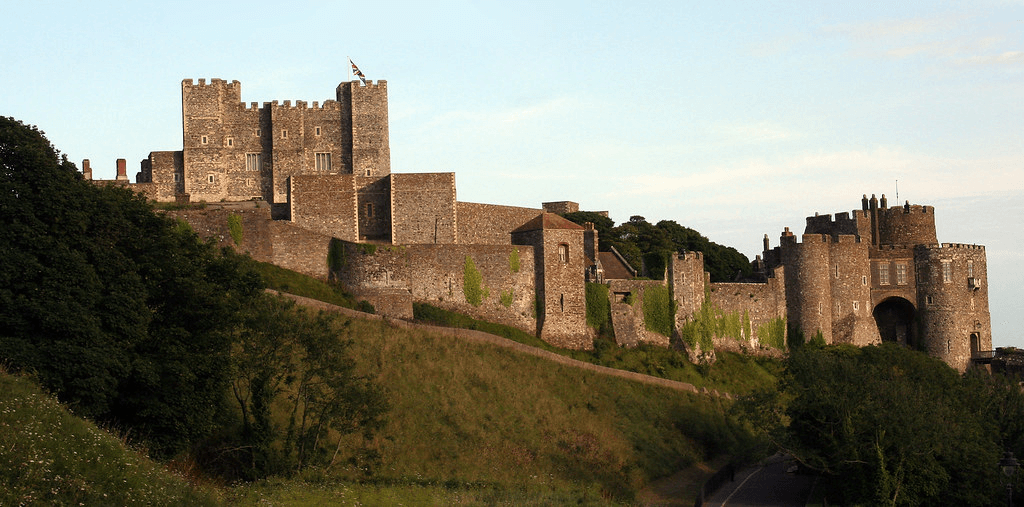
From atop its mighty position above the White Cliffs, Dover Castle proudly takes its title as the “Key to England,” underscoring its pivotal role in the country’s national defense. Its roots stretch back to the Iron Age, with significant Roman influences. Yet, it was William the Conqueror who, post-1066, transformed it into a fortified castle. Henry II further developed it into a grand stone fortress, establishing its iconic status.
The strategic importance of Dover Castle is unparalleled, especially highlighted during the Napoleonic Wars and World War II when it functioned as a garrison and a covert military command center. The castle’s vast underground tunnels, first carved out in the Middle Ages and later expanded, were crucial during the Dunkirk evacuation in 1940.
Today, Dover Castle stands as a monument to architectural and military progression, offering visitors an immersive experience with its preserved towers, medieval interiors, and war tunnel labyrinths. Its resilience and adaptability through centuries of conflict attest to its significance in England’s history.
Leeds Castle
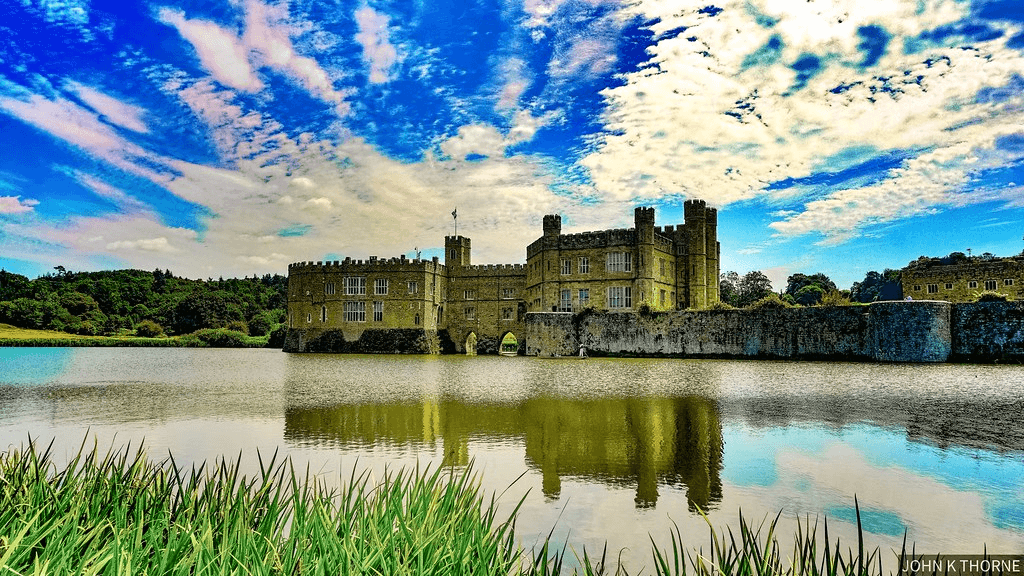
Described as “the loveliest castle in the world,” Leeds Castle is set on two idyllic islands in a lake formed by the River Len. With a history dating back 900 years, it has seen numerous reconstructions and changes in ownership, serving as a residence for six medieval queens and a palace for Henry VIII.
Leeds Castle’s charm lies not in its defensive capabilities but in its elegance, extensive grounds, and serene ambiance that has captivated visitors for centuries. Its architecture, a blend of Norman, Tudor, and Gothic styles, showcases the evolution of English castle design.
As a leading tourist attraction today, Leeds Castle is celebrated for its stunning landscapes, maze, aviary, and events ranging from classical concerts to fireworks displays. It embodies a vibrant part of England’s heritage, offering a mix of historical depth and contemporary allure.
Hever Castle
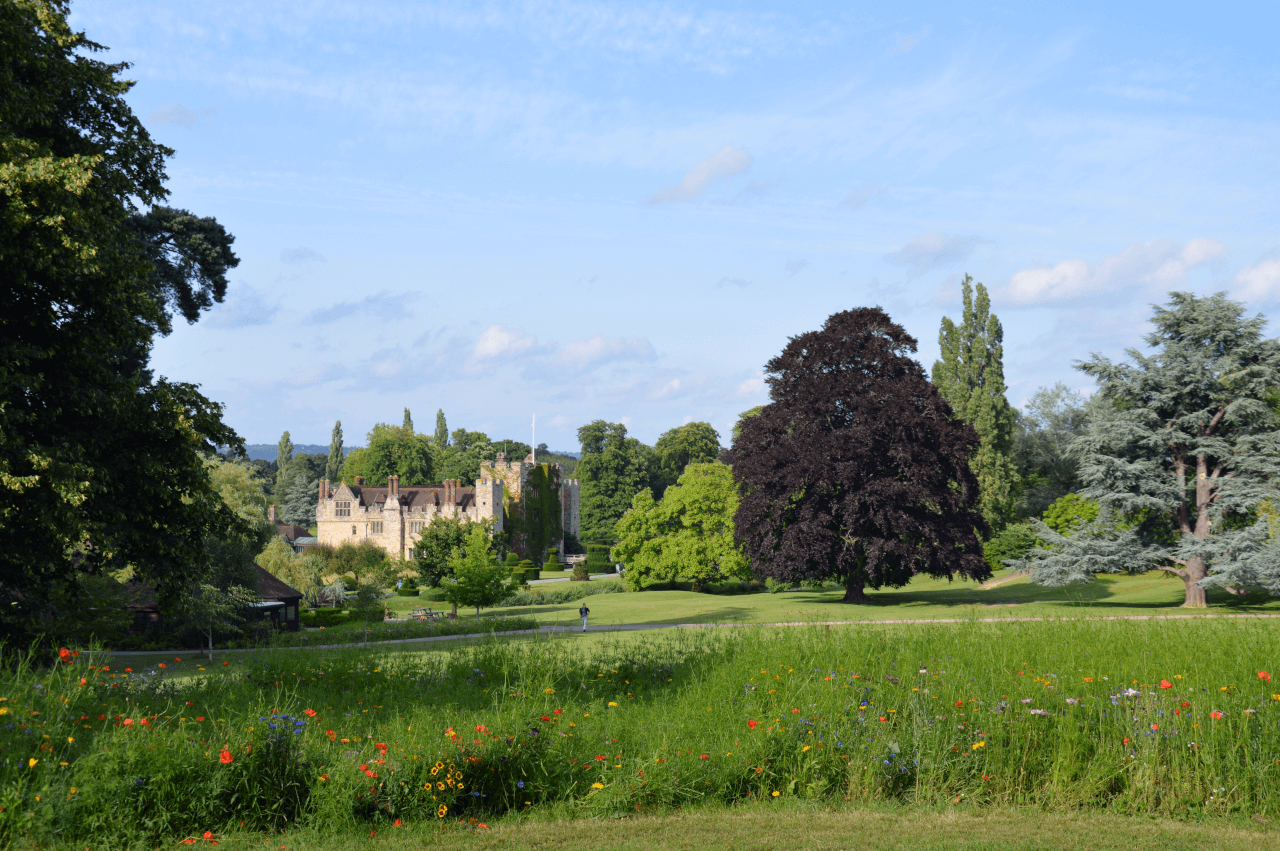
Hever Castle, a delightful Tudor mansion in the Kent countryside, was the childhood home of Anne Boleyn, Henry VIII’s second wife and mother of Elizabeth I. Dating back to the 13th century, it was central to the Boleyn family during the 15th and 16th centuries, amid the Tudor period’s religious and political turmoil.
The castle’s architecture showcases its Tudor roots with a moat, drawbridge, and classic interiors. Its gardens and grounds, over 125 acres, include Italianate gardens, a yew maze, and a water maze, enhancing the castle’s beauty.
Hever Castle now functions as a historical site and venue for events, weddings, and educational programs, allowing visitors to explore Tudor history while enjoying the scenic beauty of its gardens and lake.
Rochester Castle
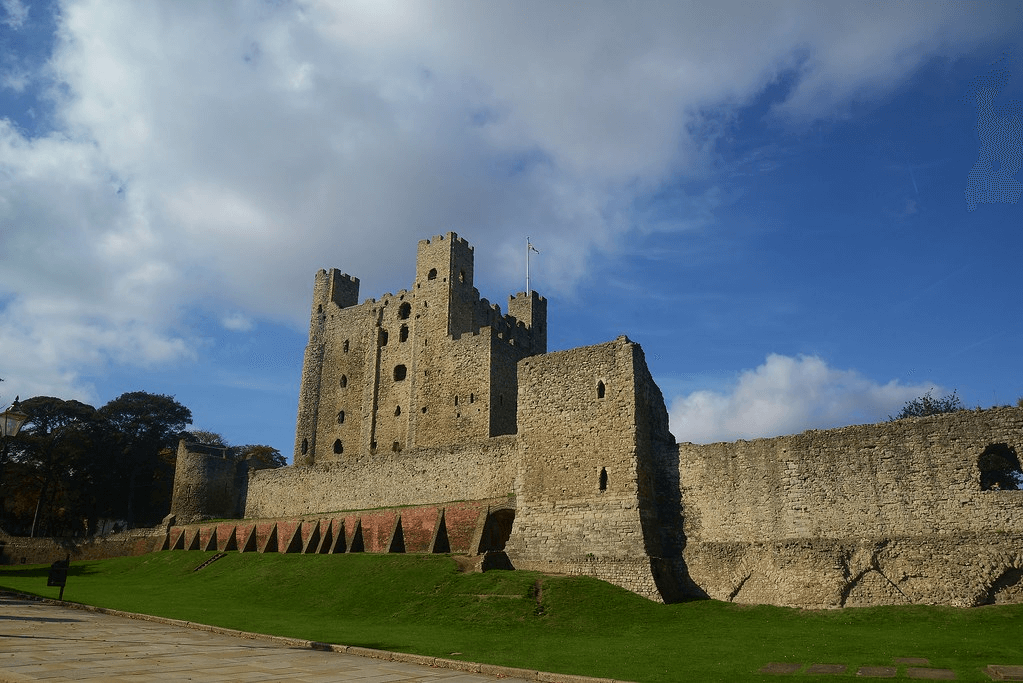
Rochester Castle remains one of the most significant examples of Norman architecture in England. Its strategic position by the River Medway made it a key site in historical conflicts, particularly during the reigns of King John and Henry III.
The castle’s early 12th-century keep is a testament to Norman military engineering. Despite sieges and the passage of time, much of the keep stands, offering insights into medieval life and military strategy.
Rochester Castle symbolizes defiance and resilience, echoing the turbulent periods of English history it has withstood. It continues to be a major historical site, drawing visitors eager to explore its ruins and delve into its rich past.
Deal Castle
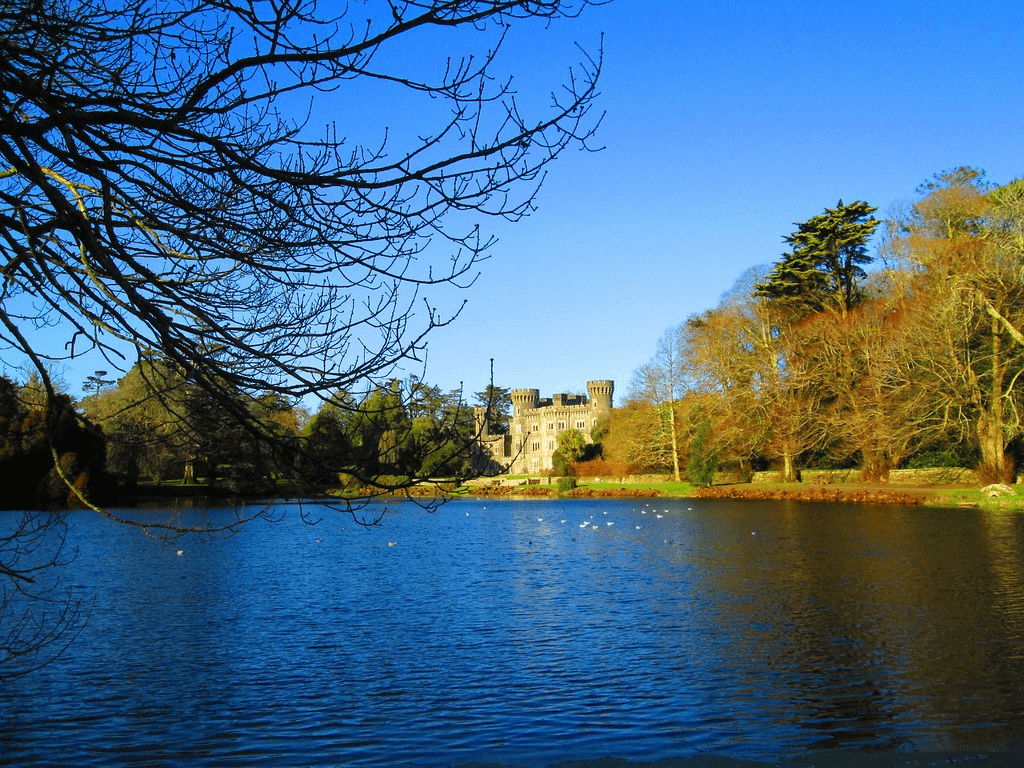
Deal Castle is a 16th-century building in Deal, built as one of many in a larger strategy of developing coastal defense by Henry VIII. It mainly served as the protection of the country against the possible invasions likely to come through France or Spain.
But despite its military origins, Deal Castle had a peaceful history. It changed its appointment from a military garrison to a private residence. Today it’s managed by English Heritage and welcomes visitors to explore its beautifully preserved chambers and walk the grounds once patrolled by Tudor soldiers.
The distinctive design of Deal Castle of the shape of a flower is a wonder not only of a military architecture but as a reminder of a process where the nature of warfare is turning from material to more symbolic defense. This enables a visitor to have a fabulous peak into the defense strategies of the Tudor England and the architectural revolution of the era.
Chiddingstone Castle
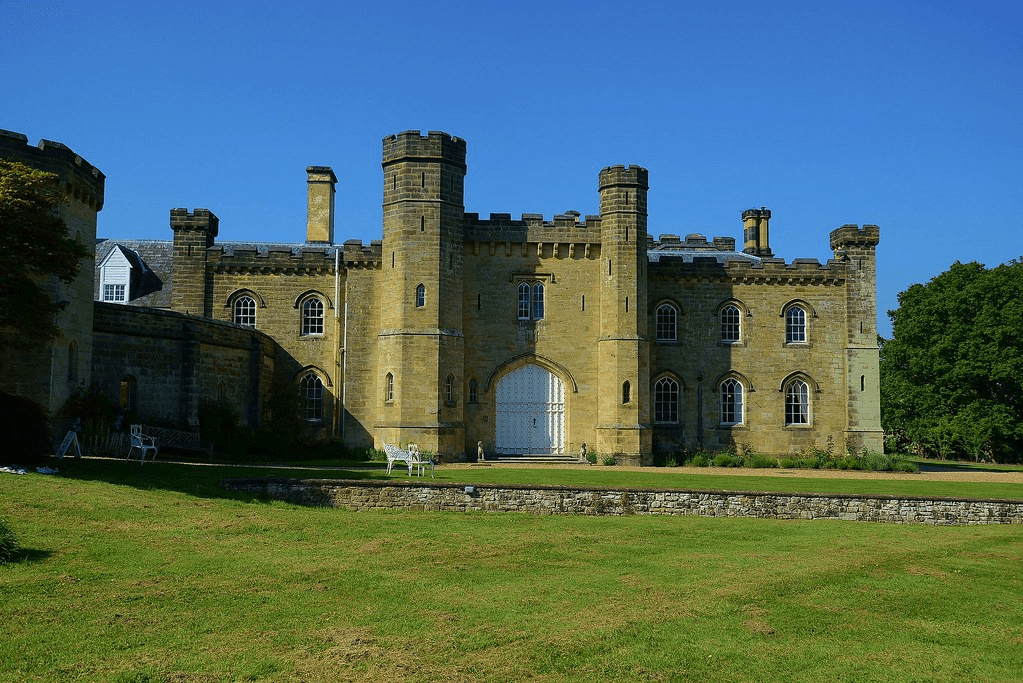
Just as captivating as its architecture, Chiddingstone Castle stands on 35 acres of very scenic countryside. The actual building in its present form dates back to the early 19th century, but the foundations and many parts of the building are much older and hint at its Tudor origins. This Kentish castle has changed so much over the centuries, starting as a private house and now finding itself as a unique repository of art and antiquities worldwide.
Perhaps the most thrilling thing today about the castle is the diversity of the collections now that Egyptian artifacts, Japanese lacquer, and Buddhist art have been brought to the display by the late Denys Eyre Bower in the middle of the 20th century. The collection is really a smorgasbord of treasures that mirror Bower’s enthusiasm and insatiable appetite for collecting, in conjunction with his zeal for creating art and history open to the layman. Chiddingstone Castle is the lighthouse of culture in Kent that has a whole range of educational tours and special events and activities throughout the year. Its setting, with a lake, woodland, and gardens, is picturesque, making it an ideal venue for a wedding, photo shoot, or family day out. Its commitment to the long-term care of the collections and the estate is bound to secure the castle a central position within the historic landscape of Kent.
Tonbridge Castle
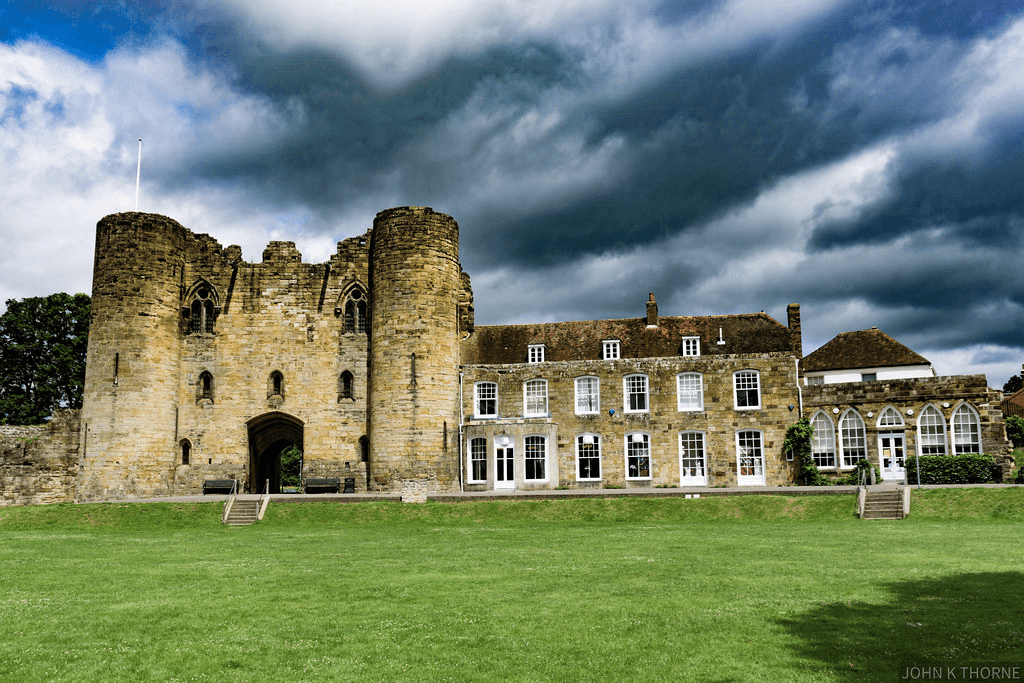
Tonbridge Castle stands as a monumental testimony to the military architecture of the medieval age, beginning in the period of the Norman Conquest. Its most distinguished feature is the gatehouse which is said to be one of the finest still in existence in England. Therefore, Tonbridge Castle in the long run symbolized architectural supremacy signifying Tonbridge as a fortress of importance to strategic defense at the time of the medieval ages.
Tonbridge Castle has been reconstructed and refurbished a couple of times and from a wooden fortress to a stone fortress as time has passed by. Today, it presents the visitor with anything but an ordinary journey through time with interactive exhibits and audio tours that tell its rich history. The castle grounds on the banks of the River Medway, with everything from community events and markets, to outdoor shows, is all set up in this picturesque setting in general, providing an obvious focal point for all cultural and social life.
The adaptation of Tonbridge Castle makes it an example of the historical site’s permeability for today’s society. It still becomes a valued place for culture heritage to visit and explore for education and leisure. Thus, bridging the past into the present.
Sissinghurst Castle Garden
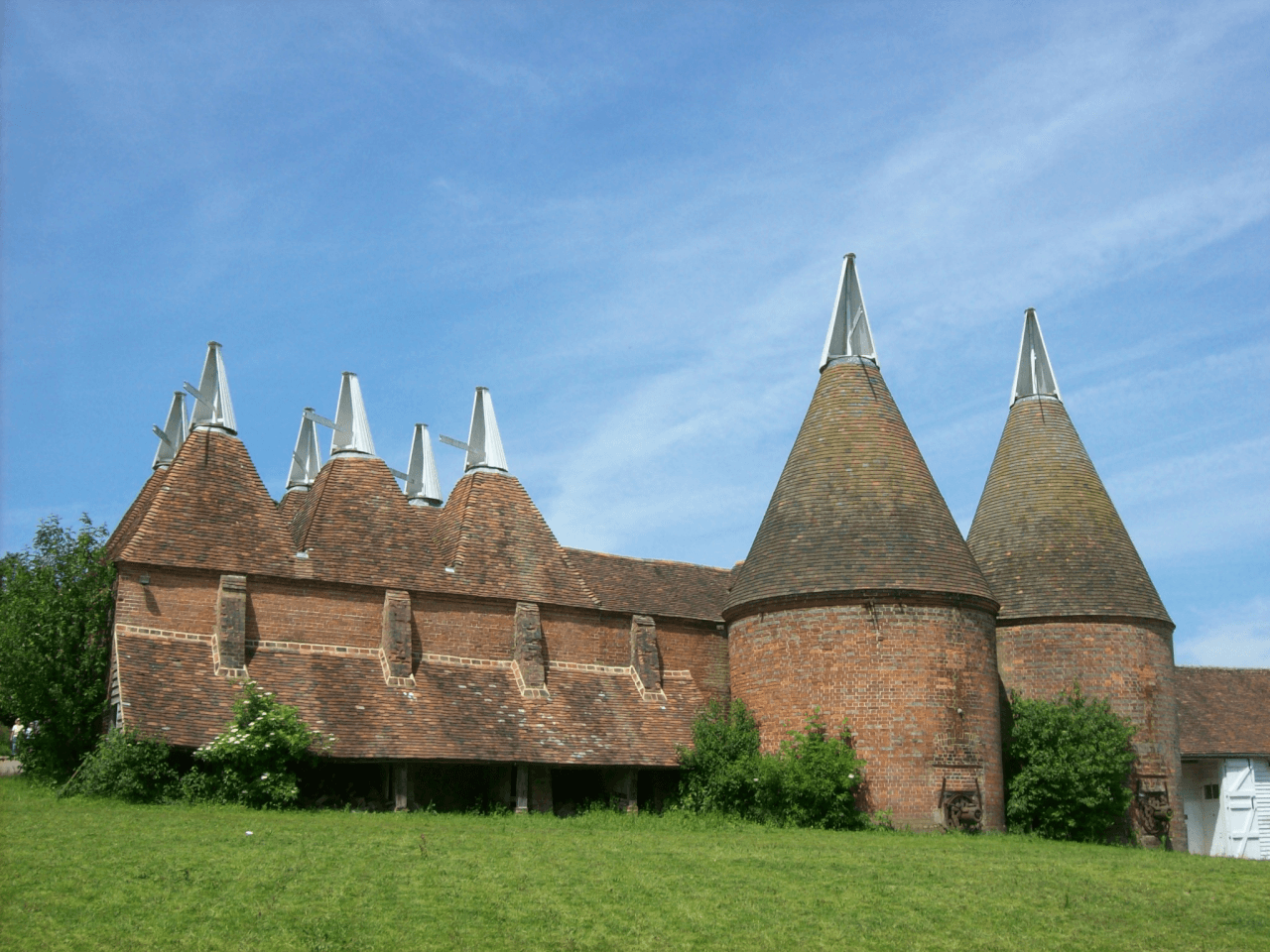
Sissinghurst Castle Garden, which was designed in the 1930s by Harold Nicolson and Vita Sackville-West, was landscaped to become a garden masterpiece. Situated in Kent, this renowned garden is home to sophisticated beauty, with innovative structure and romantic history of the creators. Each area of the garden is designed as a separate “room,” or section, with its character and planting scheme. They range from the vibrant colors of the Cottage Garden to the calm, clear simplicity of the White Garden.
Literary and historic association are immersed with the S Sissinghurst Castle Garden other than its horticultural achievement. Vita Sackville-West was an eminent poet and writer who was inspired by the beauty of the place while the architectural idea of the garden was influenced by Harold Nicolson. They together turned the ruins of an Elizabethan manor house into one of the most iconic gardens in the world. Today, people from all over the world visit Sissinghurst Castle Garden to see how the creative genius of its founders is still alive. Still run by the National Trust, it continues to provoke the imagination of gardeners and lovers of the countryside with its displays which stun, the work of conservation and telling the story of the place where beauty was wrought against a backdrop of history.
Saltwood Castle
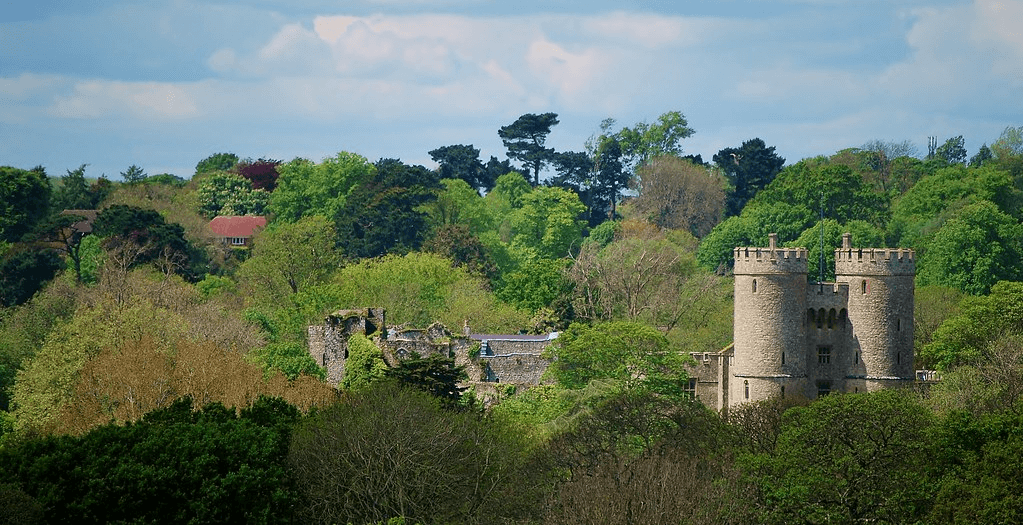
With its roots going back to the Roman era, Saltwood Castle has become known during the medieval age due to the fact that the murder of Thomas Becket, in 1170, was actually plotted there. Positioned in the village of Saltwood, it offers a great view, a rich historical past, and an ambiance that speaks volumes about the history of England. A very small proportion of the public have knowledge about Saltwood Castle, though its history is fascinating, as a private residence in use today.
The architecture stays of Saltwood Castle. Sections of the original keep and its surrounding moat still can be seen in the setting, which gives a view of how the defensive aspect played within the structure. The castle has been perfectly preserved over the centuries; it still is quite in touch with history, which is both a fortified stronghold and a home.
Access to the public to the Saltwood Castle has been extremely rare, and the grounds are opened to the public occasionally to host special events and charity functions, allowing people a rare chance to roam the historic ambiance. At such times, people will have a rare view into the historical role the castle played in English history and the ongoing impacts it has in the local community.
Scotney Castle
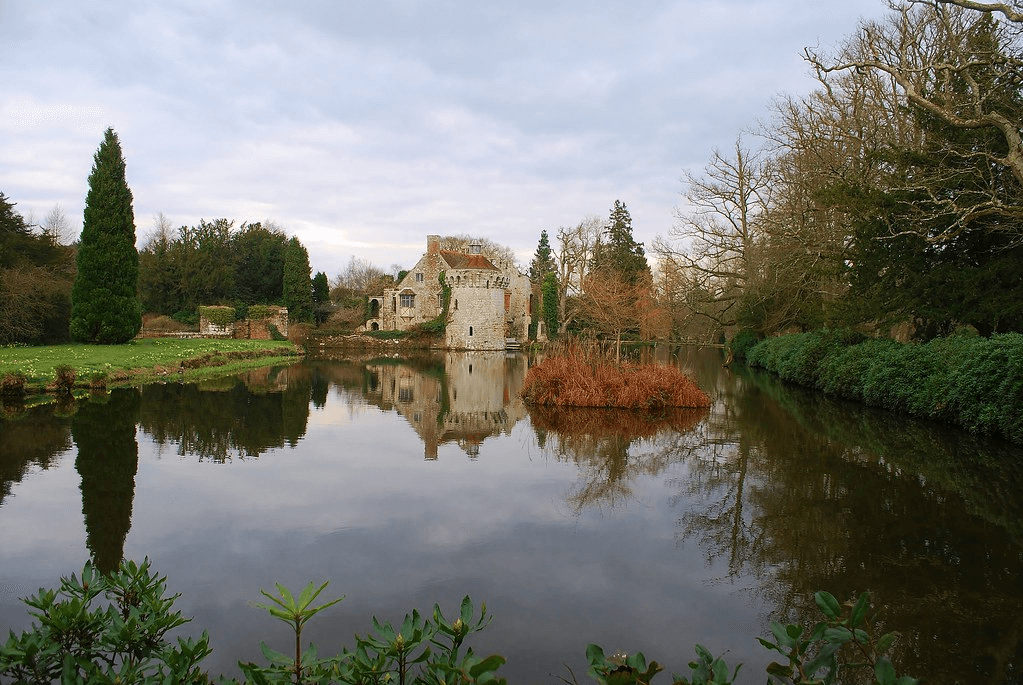
Scotney Castle, located in Kent, England, offers a picturesque glimpse into historical architecture and landscaped gardens that captivate the imagination of visitors from around the world. This 14th-century moated castle, surrounded by a tranquil lake, presents a unique blend of history and natural beauty, making it a treasured part of England’s heritage.
The estate spans over 770 acres, featuring an exquisite Victorian country mansion alongside the romantic ruins of the medieval castle. The contrast between the old castle, with its ancient stones and defensive features, and the newer mansion, designed in the Elizabethan Revival style, showcases the evolution of English architecture and living standards through the centuries.
At the heart of Scotney Castle’s appeal are its beautifully manicured gardens, which are considered some of the finest examples of landscape gardening in England. These gardens are designed to complement the picturesque ruins, with a variety of plants, flowers, and trees that provide a riot of color throughout the seasons. The estate is also home to a diverse range of wildlife, offering nature enthusiasts a serene environment to explore and enjoy.
The history of Scotney Castle is as rich and varied as its architecture. The estate has been owned by the National Trust since 1970, when it was bequeathed by its last private owner, Christopher Hussey. The Hussey family played a significant role in the estate’s history, contributing to its architectural and horticultural legacy. Today, visitors can explore the mansion, learn about the families that lived there, and delve into the castle’s past through guided tours and interactive exhibits.
The Architectural Evolution of Castles in Kent
The architectural landscape of Kent’s castles provides a fascinating lens through which to view the broader narrative of England’s historical and military developments. From early motte-and-bailey constructions to the formidable concentric fortresses, the evolution of castle architecture in Kent mirrors the technological advancements, shifting societal structures, and changing priorities of the times they span.
Early Motte-and-Bailey Castles
The motte-and-bailey castles, introduced by the Normans, were the earliest form of castles in Kent, characterized by a wooden or stone keep on a raised earthwork (motte), accompanied by an enclosed courtyard (bailey). These structures were quick to construct and served as effective fortifications against early medieval warfare tactics. However, their wooden components were vulnerable to fire and decay, prompting a transition to more durable stone constructions.
Stone Keep Castles
The stone keep castle represented a significant advancement in military architecture. These stone fortresses, exemplified by the towering keep of Rochester Castle, offered greater defense capabilities against siege warfare. Their thick walls and limited entry points made them formidable obstacles to attackers, reflecting the increasing sophistication of medieval warfare.
Concentric Castles
The concentric castle design marked the zenith of medieval military architecture, featuring multiple rings of defensive walls, creating layers of fortification that were difficult for besiegers to penetrate. Dover Castle is a prime example of this architectural innovation, showcasing the strategic depth and complexity of later medieval fortifications.
As the military significance of castles waned with the advent of gunpowder and artillery, many of Kent’s castles transitioned into stately homes or fell into disrepair. This shift reflects the changing role of castles from military bastions to symbols of status, wealth, and power, and, eventually, to historical ruins and tourist attractions.
The architectural journey of Kent’s castles from pragmatic military installations to cherished historical landmarks underscores the dynamic interplay between warfare, technology, and society. These structures not only tell the story of England’s past but also illustrate the evolution of architectural thought and practice in response to the challenges of each era.
The Role of Castles in Kent’s Tourism
The castles of Kent have transcended their original martial purposes to become integral components of the region’s tourism industry, attracting visitors from across the globe with their blend of historical significance, architectural grandeur, and picturesque settings. These ancient fortresses offer a tangible connection to the past, allowing visitors to step back in time and experience the rich tapestry of England’s history firsthand.
Many of Kent’s castles, such as Dover and Leeds Castle, host a variety of educational programs and interactive events throughout the year. These range from historical reenactments and medieval fairs to guided tours and workshops, which not only entertain but also educate visitors about the castles’ histories and the eras they represent. Such initiatives have made these castles vibrant hubs of learning and discovery, appealing to families, students, and history enthusiasts alike.
The influx of tourists drawn by these castles significantly contributes to the local economy, supporting jobs in the tourism sector and beyond. Moreover, the revenue generated from ticket sales, events, and merchandise helps fund the ongoing preservation and maintenance of these historic sites. This symbiotic relationship between tourism and conservation ensures that Kent’s castles remain well-preserved for future generations to explore and appreciate.
As symbols of Kent’s heritage and as focal points for cultural tourism, these castles play a pivotal role in the region’s identity and economic vitality. They encapsulate the history, architectural evolution, and enduring allure that make Kent a fascinating destination for visitors worldwide.
Conclusion
Kent’s castles stand as majestic markers of the region’s storied past, from fortifications of power and defense to emblems of heritage and culture. Their walls, steeped in history, tell tales of conquest, innovation, and transformation, reflecting the changing dynamics of English society and architecture over the centuries. As we continue to explore and preserve these historic edifices, they remain not just relics of the past but vibrant, living monuments that connect us to the legacy of those who came before. The castles of Kent, with their enduring beauty and significance, are treasures to be cherished and shared with the world.

